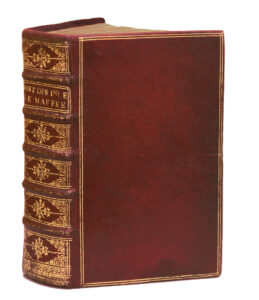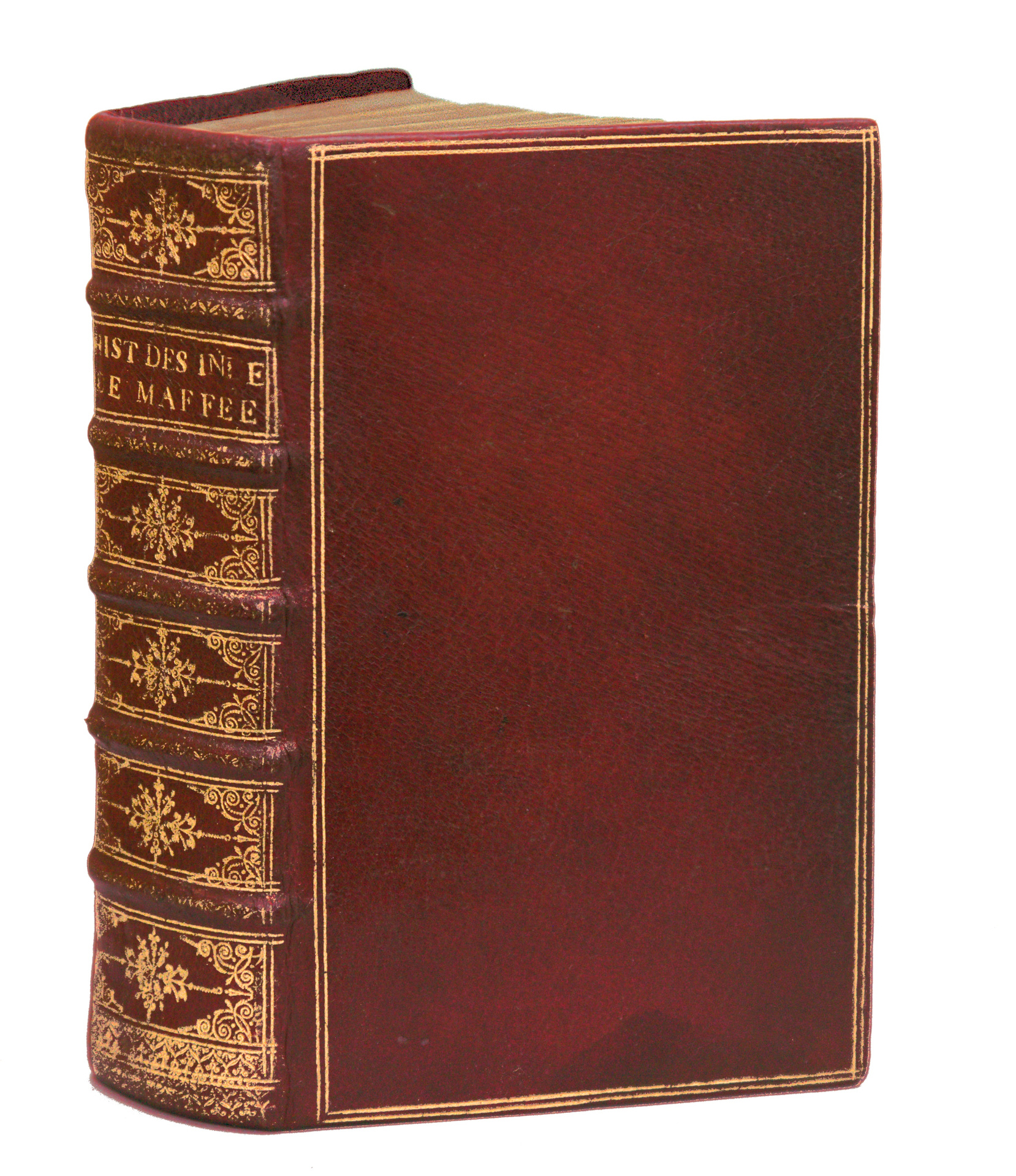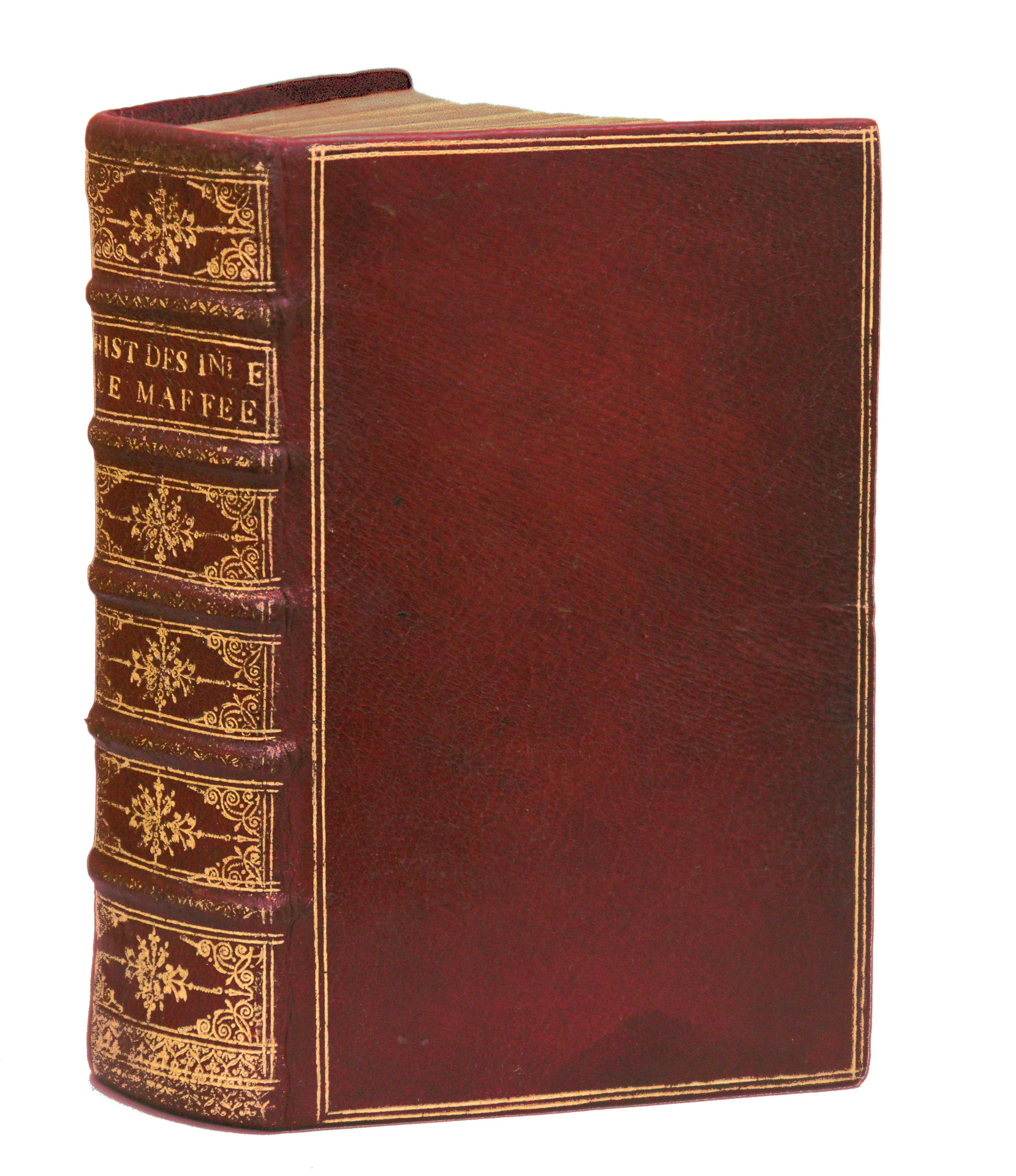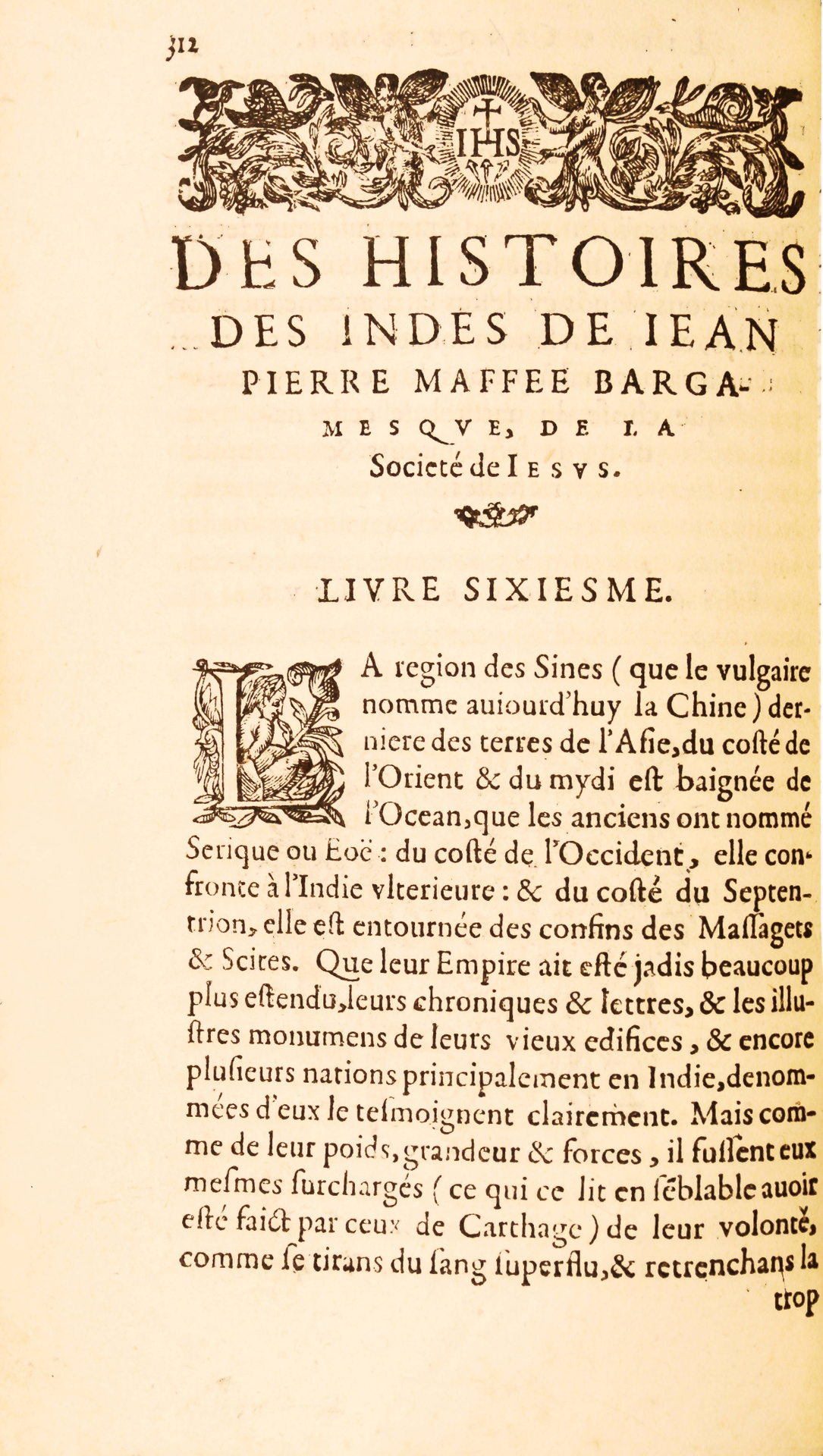리옹, Jean Pillehotte, 1604.
In-8 de (2) ff., 953 페이지, (47) 추가 페이지. 약간의 얼룩, 915페이지부터 작은 벌레 터널 자국.
전체 붉은 모로코 가죽, 금박 줄무늬로 테두리를 장식하고, 상수리로 장식된 척추. 17세기의 우아한 제본.
171 x 116 mm.
가장 유명한 예수회 신부 장 피에르 마페이의 작품의 프랑스어 번역본 (1535-1603) « Historiarum Indicarum ».
De Backer & Sommervogel, V, col. 299 ; Sabin 43782.
이것은 극동 지역에서의 초기 예수회 임무 중 하나이며, 이냐시오 데 로욜라의 편지와 삶을 포함합니다.
이탈리아 예수회 신부 조반니 피에트로 마페이 (1538-1603)의 대작인 인도 전반에 대한 역사는 브라질, 인도, 일본, 중국의 예수회 포르투갈 선교 이야기를 서술합니다. 이것은 이 책의 최초 프랑스어 번역이며, 그것을 번역한 이는 페리고르당 수도사 프랑수아 아르노 드 라 보리입니다.
“Based on primary materials and written in elegant Latin, Maffei’s Historiarum Indicarum received an enthusiastic reception all over Europe. The way had been prepared for its appearance by the enthusiasm aroused by the Japanese embassy. Like Mendoza’s book on China, it hit the market when curiosity about the Far East was at its height…..Unlike many of the letters from the East, Maffei’s work is couched in careful language and rhetorical flourishes that are notably few. Even Valignano, who had warned that Maffei’s work should not be published until it had been seen in the East, appeared to be happy with his discussion of Japan. In 1603, the Jesuit Visitor [i.e. Va1ignano] wrote from Macao: “Of all those who have so far written about Japan, none has done it with greater precision or in better order than Father G. P. Maffei.”
“Most of Maffei’s work is concerned with the Portuguese conquests and the Jesuit stations in India, the East Indies, and the region of the Arabian Sea to about 1557. The first five books appear to follow rather closely the model of Barros. Book VI, dealing with China, like book XII, which is mainly concerned with Japan, is heavily indebted to Valignano’s account of those countries. The appendixes of letters … were almost all written either about or from Japan in the years between 1549 and 1574. While reproducing here many of the same letters which he had earlier appended to his translation of Da Costa’s book [i.e. Acosta’s Rerum a Societate Jesu in Oriente gestarum], Maffei appears to have exercised greater care in the selections which he made for this second compendium. Furthermore, this second effort did not suffer from the excisions and revision of the Roman censors. In fact, it is worth observing that it originally appeared in Florence, and that none of the subsequent editions was produced in Rome” (Latch I pp. 325-6)” (Bemard Quaritch Ltd., catalogue 1226: “The Society of Jesus, 1548-1773,” 134, re. Cologne, 1593 ed.).
1570년 마페이는 동양 인디아의 역사의 라틴어 번역을 출판했고, 포르투갈의 추기경 헨리는 그의 스타일의 아름다움에 매료되어 리스본으로 초대하여 인디아의 전반적인 역사를 공공 기록 보관소에 보존된 문서들을 통해 작업하라고 했습니다.
예수회의 신부는 후작의 초대를 받고 귀족적인 환대를 받았으며, 해당 작업을 위한 모든 필요한 지원을 받았습니다. 1581년 헨리가 사망한 후, 마피이는 다시 이탈리아로 돌아와 여러 차례에 걸쳐 로마와 시에나에 거주하며 그의 작품을 되돌려보고 다듬는데 집중했습니다. 교황 클레멘스 8세는 그에게 바티칸에 거처를 제공하고 그가 이탈리아어로 작성한 그레고리우스 13세의 연대기를 라틴어로 계속 쓰도록 초대했습니다. 마페이의 모든 작품은 매우 뛰어난 단순성과 자연스러움으로 쓰여졌습니다.
Fort bel exemplaire à grandes marges en élégante reliure en maroquin orné du XVIIe 세기.





